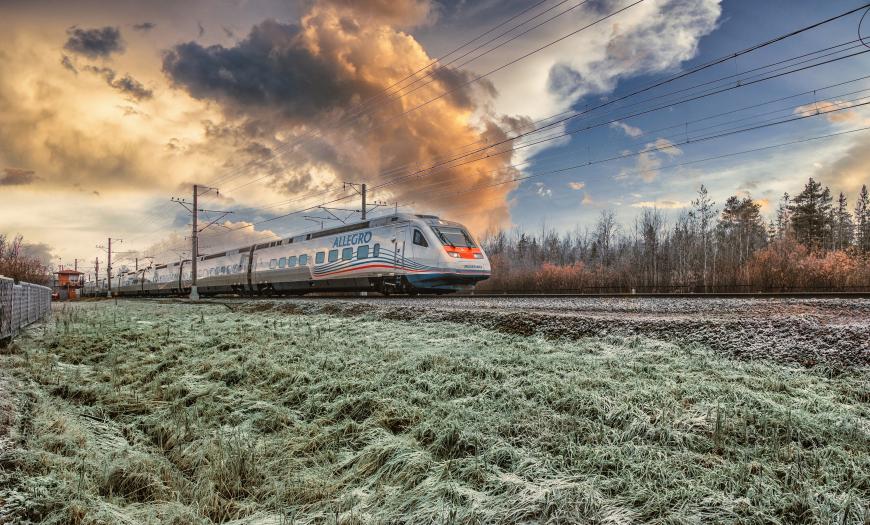At the turn of the 20th – 21st centuries, Russia began to actively introduce high-speed traffic into the railway network. Lengiprotrans has developed a project for organizing high-speed passenger train traffic on the St. Petersburg - Buslovskaya section (State Border). This is the first highway connecting Russia with Europe by high-speed traffic.
To organize high-speed passenger traffic and ensure increasing freight traffic to the ports of Vysotsk, Primorsk and Vyborg, an option was adopted to reconstruct existing tracks for high-speed traffic (over 160 km / h) on the St. Petersburg - Buslovskaya Oktyabrskaya railway section with the removal of freight traffic to the St. Petersburg - Ruchyi - Losevo - Kamennogorsk - Vyborg.
Such a solution, which deflects trains with bulk cargo and coal, ensures the organization of safe high-speed passenger traffic and more rational use of the route to Finland through Svetogorsk. In addition, it allows you to preserve the ecological purity of the Kurortny district of St. Petersburg, where the health centers are concentrated.
In order to transfer freight trains from Vyborg to Priozerskoe, it was planned to build a new double-track electrified railway line Losevo - Kamennogorsk with a length of about 60 km. The implementation of the project included comprehensive design and survey work:
• construction of 56 km of second tracks with electrification;
• reconstruction of 127 km of existing railways;
• comprehensive reconstruction of the Ruchyi - Petäjärvi section;
• complex construction of a double-track section of the Sosnovo - Petyajarvi - Kamennogorsk railway line;
• comprehensive reconstruction of the Kamennogorsk - Vyborg section with the construction of a second track.
Difficult conditions for exploration and design were created by widespread undivided marine, lacustrine and Upper Quaternary lacustrine-glacial deposits, granite protrusions and coarse moraine deposits.
The implementation of the project made it possible to reduce the travel time from St. Petersburg to Helsinki to 4 hours.
Design of the high-speed highway St. Petersburg - Buslovskaya - Helsinki
Author's department:
Project Status:
Provision of increasing freight traffic and high-speed passenger traffic


